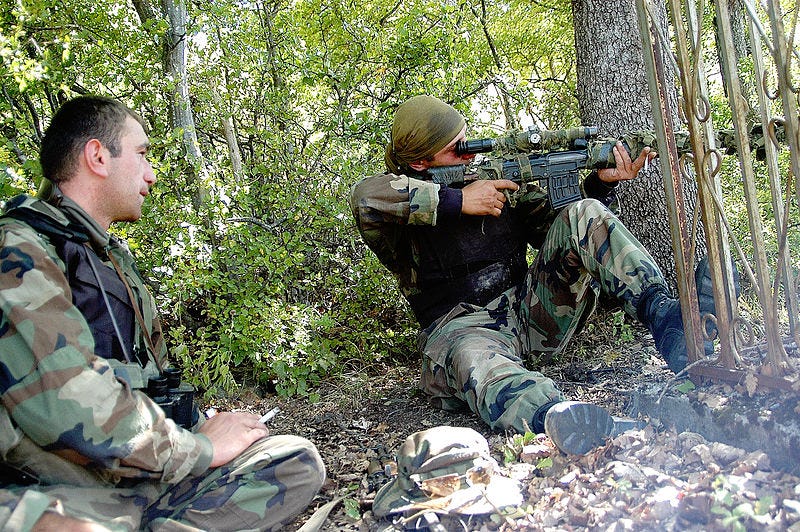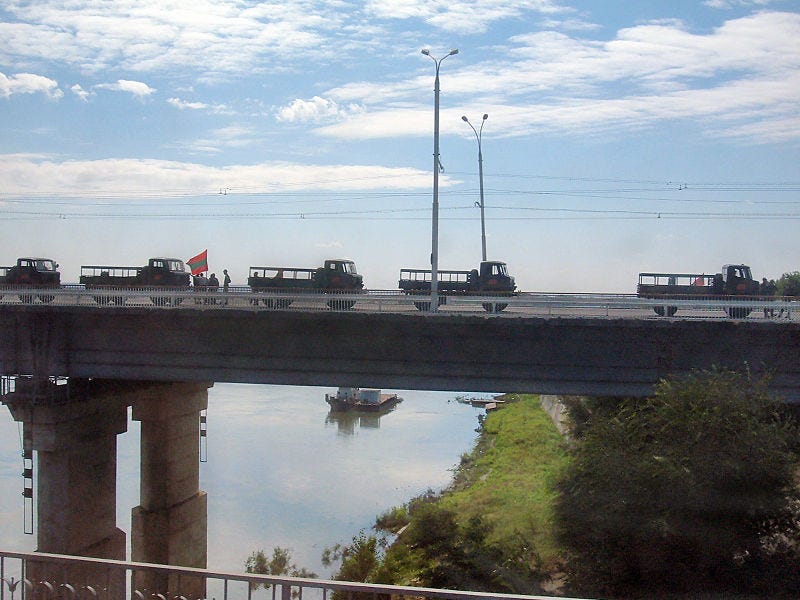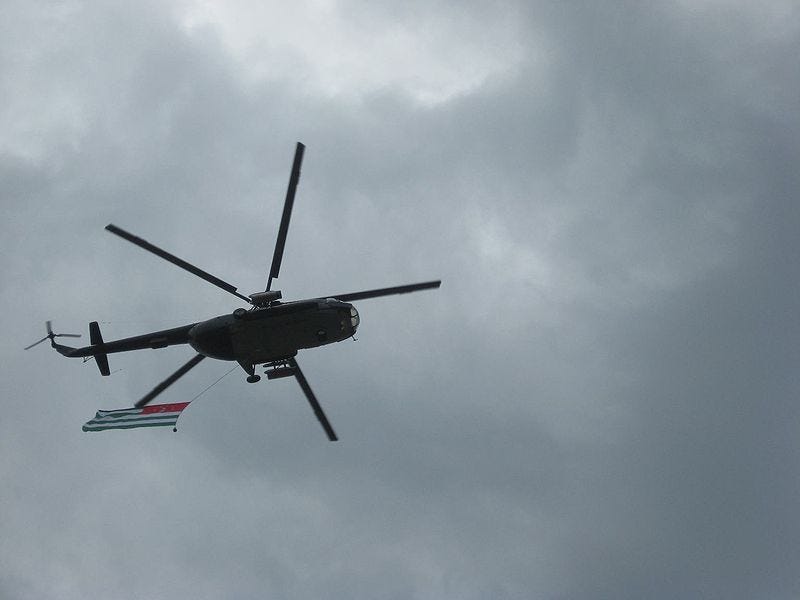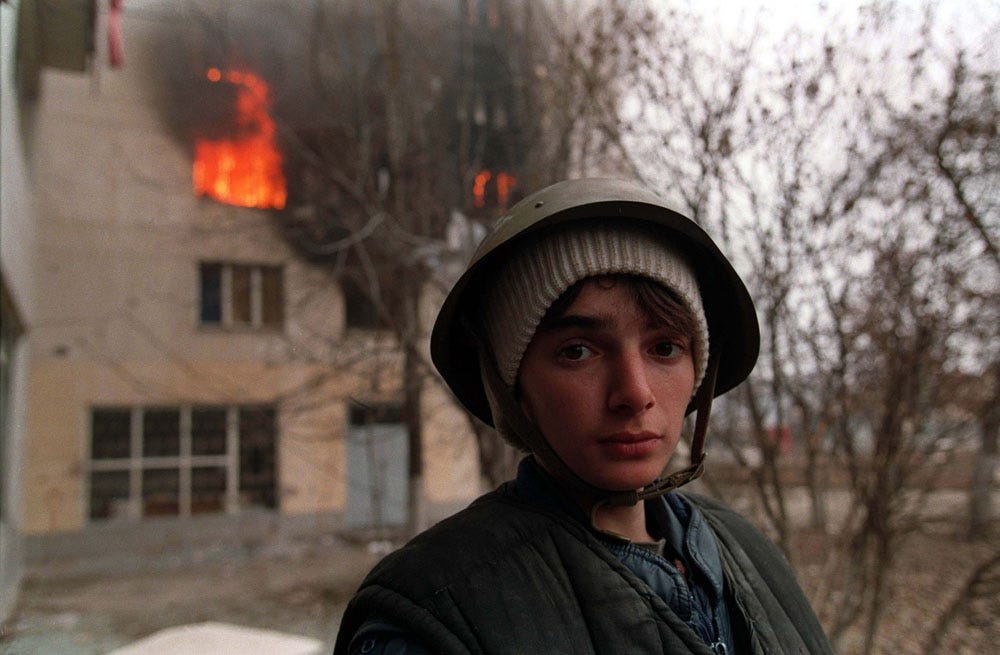
Ukraine is on the brink of war. On Feb. 22, pro-European protesters toppled the government of Pres. Viktor Yanukovych, forcing the pro-Russian Yanukovych to flee to Rostov-on-Don. Parliament announced it would hold fresh elections in May, but Ukraine’s ethnic Russians and their allies could have other ideas.
Gunmen seized airports in the Crimea region, which is heavily Russian and where Moscow leases a naval base. Russian Pres. Vladimir Putin called for a return to “normalcy”—whatever that means—and the Kremlin proceeded with a major military exercise on Russia’s border with Ukraine.
Crimea is now more or less under military occupation, and it’s unclear what happens next. But Russia’s warlike history along its vast periphery is not in doubt. Since the Soviet Union’s break-up in the early 1990s, Moscow has fought a chain of short, nasty, little wars in border areas that many Russians view as their own, even if some do happen to lie outside Russia’s boundary.

South Ossetia, 1991
Georgia split from Russia following the Soviet collapse—and the new country’s Ossetian ethnic minority wasn’t exactly thrilled. Long allied with the Russians, the Ossetians wanted to govern themselves separately from the Georgians. But the new regime in Tbilisi refused. Both sides armed themselves.
Fighting between Georgian and Ossetian militias was the worst in the disputed city of Tskhinvali, but both armies also ethnically cleansed surrounding villages. Around a thousand people died in fighting that peaked in the spring of 1991 and ended with a Russian-brokered peace deal in June 1992.
The Georgians accused the Russians of secretly sending troops to aid the Ossetians. Regardless, Moscow clearly favored the Ossetians and, in the aftermath of the conflict, deployed “peacekeepers” to South Ossetia to help enforce the armistice.

Transnistria, 1992
Ethnic Russians and Ukrainians in the Transnistria region of Moldova opposed Moldovan rule and sought their own independence from the newly independent former Soviet state. It was the early 1990s and the former Soviet Union was becoming a confusing and dangerous place.
Starting in March 1992 Transnistrian troops—trained by the Russian army and reportedly reinforced by individual Russian soldiers—battled Moldovan forces backed by Romania. The fighting lasted until July and claimed more than 600 lives. As in South Ossetia, Russia brokered a ceasefire that allowed it to deploy peacekeeping troops. Today the peacekeepers function as a sort of de facto occupation force.

Abkhazia, 1992
A territory along Georgia’s western border, Abkhazia broke away from Georgia in August 1992. The ensuing conflict lasted more than a year. The U.N. estimates 23,000 people died, many of them ethnic Georgians killed during cleansing campaigns by Abkhazia secessionists.
Russia was neutral at first and sold arms to both sides. As the war continued, Russian popular opinion moved toward the separatists. Moscow ultimately backed Abkhazia and, at the battle of Sukhumi, Russian MiG-29s dropped thermobaric bombs on Georgian civilians. The bombings took place after Moscow negotiated a ceasefire that Abkhazia broke.
Georgia lost control of Abkhazia and today the territory claims to be an independent state—although most of the world does not recognize it. In 1998, Georgia fomented an insurgency in the region that lasted just six days. Per custom, Russia keeps 3,500 soldiers in the region.

Chechnya, 1994 & 1999
Chechnya is to the north of Georgia in the North Caucasus region, just along Russia’s southern border. Russians have fought Chechens since the late 18th century. When the Soviet Union collapsed, Chechnya declared its independence. Russia attempted to retake the region in 1994, sparking the first Chechen war.
Thousands of Russians and Chechens died, including as many as 100,000 Chechen civilians. The Russian army used overwhelming air and land force, but the Chechens countered with effective guerrilla and terror tactics. Russian public opinion turned against the war and Moscow negotiated peace in 1996. Chechnya remains independent.
Russia returned in 1999, justifying its actions as a response to terrorist attacks on Russian soil by Chechen militants. The war lasted less than a year and leveled Grozny, Chechnya’s capital. In 2000, Russia installed a puppet government.
The war turned into a protracted insurgency, which officially ended in 2009. But the insurgency has also metastasized throughout the region, and the North Caucasus is still a very dangerous place.

Georgia, 2008
In the summer of 2008 the conflict between Georgia and Russia over the disputed regions of Abkhazia and South Ossetia led to another war. During the evening of Aug. 7, Georgia attempted to retake portions of South Ossetia that it had lost in 1991. Some of the peacekeepers Russia left behind to guard the region died in the Georgian military campaign—and Russia came down hard in retaliation.
The war lasted five days. The Russian military swept through South Ossetia into Georgian-controlled territory, slicing the country in two and seizing the city of Gori, which cut off Georgia’s capital of Tbilisi from the coast. On Aug. 9, Russia opened a second front in Abkhazia and pushed the Georgians out of the region.
On Aug. 14, the international community negotiated peace between the two countries. But Georgia lost territory and the Russians were slow to withdraw from the buffer regions and captured zones outside of South Ossetia. Today, the South Ossetia-Georgia border is a no-man’s land.
Russia loves its small wars and is very, very good at them. With the Ukraine in turmoil, Moscow has a chance to seize Crimea, an area populated with pro-Moscow ethnic Russians and the historic home of Russia’s Black Sea Fleet. It is an area in which Russia is heavily invested.War is Boring
No comments:
Post a Comment